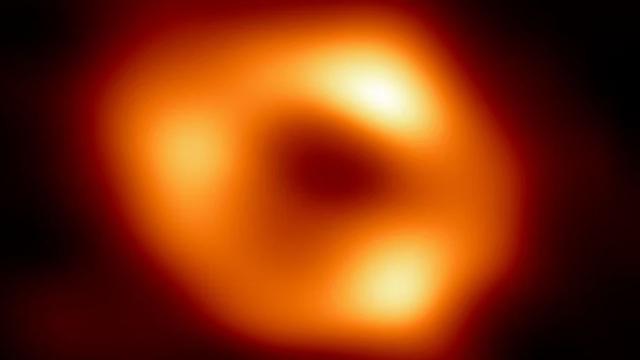The Event Horizon Collaboration, the group behind the first-ever image of a black hole, just achieved another huge accomplishment: an image of Sagittarius A*, the black hole at the centre of the Milky Way. This is a breakthrough in our understanding of our home galaxy and the astrophysics of its centre.
The Event Horizon Telescope (EHT) is a consortium of radio telescopes around the world. By combining the observations of these telescopes, the team is able to see black holes, regions of spacetime with such intense gravity that not even light can escape them. The image released today shows the shadow of Sagittarius A* (pronounced “A star”) as well as the high-energy region around it.
The collaboration of hundreds of scientists is specifically investigating the structure and immediate environments of two supermassive black holes called Messier 87 and Sagittarius A*. M87 is 54 million light-years from Earth and was imaged by the collaboration in 2019, a historic feat in astrophysics. Sagittarius A* is the 4-million-solar-mass black hole at the centre of our own Milky Way just 27,000 light-years away and the subject of the research announced today.

The Milky Way’s centre was first located 104 years ago; just over a decade later, the radio waves emanating from the galaxy’s core were discovered, and it took a half century for Sagittarius A* to be identified. But today’s image is a gravitational shift toward confirming that Sagittarius A* is indeed a supermassive black hole, as we’ve assumed, as opposed to some other bright radio source.
The gas around the black hole swirls at ridiculous speeds, making the object a tricky subject to image. Getting this composite image was like getting a “clear picture of a running child at night,” said José L. Gómez, the VLBI Group Leader and an astrophysicist at the Instituto de Astrofísica de Andalucía in Spain, during a press conference Thursday morning. “You can imagine how crazy it drove us for many years.”
The EHT relies on a technique called Very Long Baseline Interferometry, which uses the differences in the time it takes light from a source to reach each telescope in a group to make precise observations of those sources. Black holes like the one at the centre of the Milky Way are very strong sources of radio waves, making them fantastic targets for radio telescopes like the ones that make up the EHT.
We will update this article throughout the day. You can follow the EHT press conference live here.
